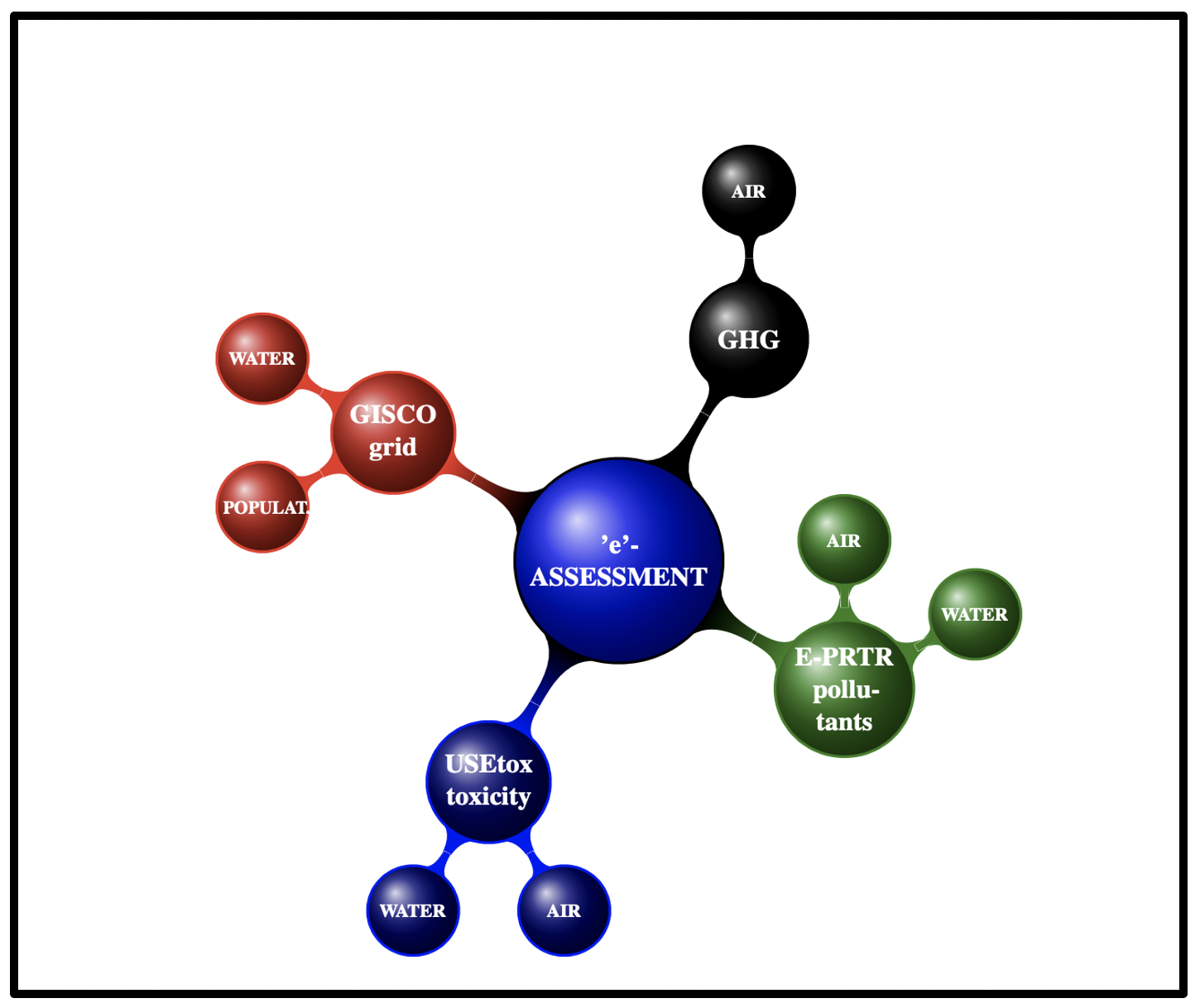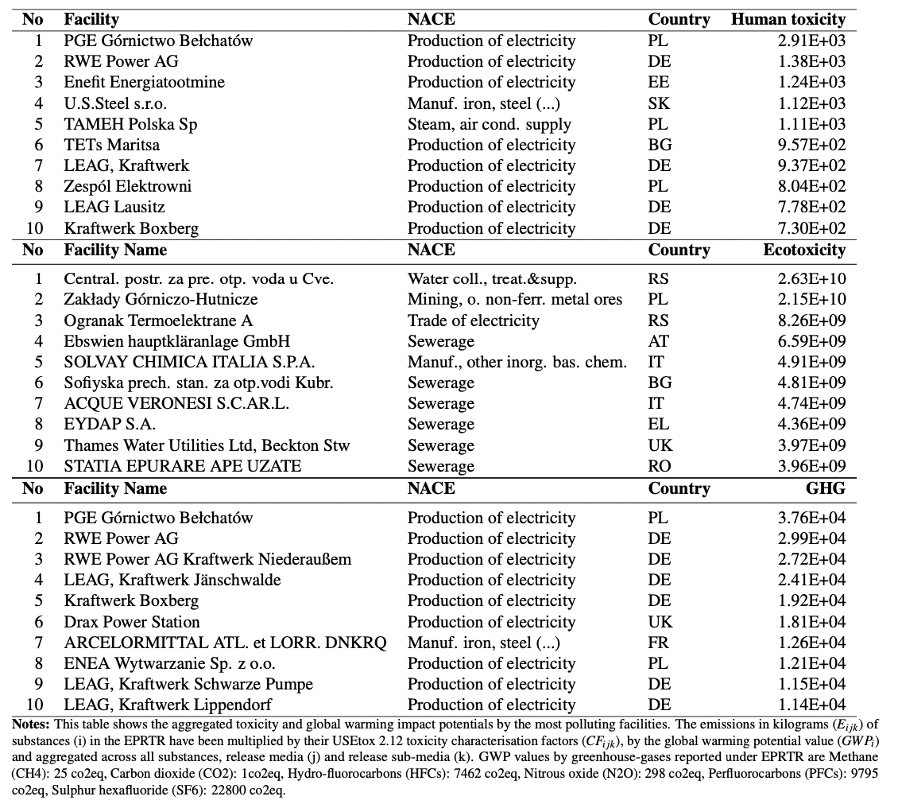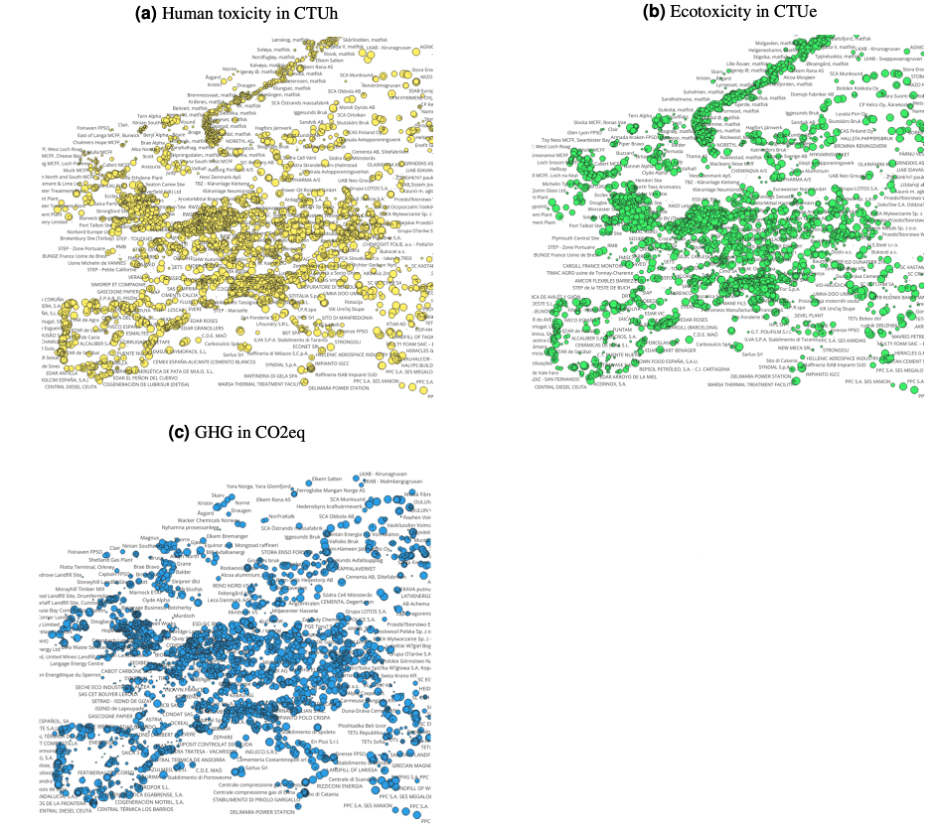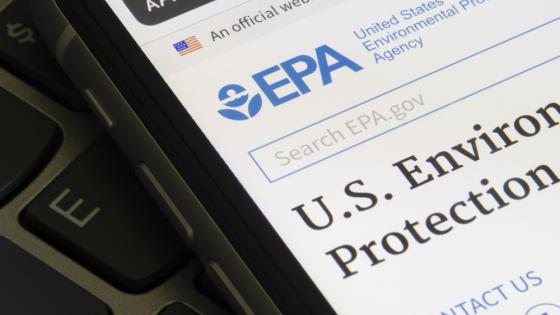Better understanding, measuring, and reporting of environmental impacts will be imperative for producers, investors, and customers from 2023 with the new sustainability requirements rolled out recently in Europe through the Corporate Sustainability Reporting Directive (CSRD) and Sustainable Finance Disclosure Regulation (SFDR) (EU 2023).
Earlier carbon and water footprint methodologies helped assess resource consumption, CO2 emission, and related climate change risk separately, but usually neglected integrated assessment of relevant impacts, such as those related to the production and use of chemicals (Sala and Goralczy 2013). Huynh et al. (2021) gave evidence in their Vox column of the importance of pollutant release monitoring. They found that industrial firms reduce their emissions at their local plants following enforcement actions by the US Environmental Protection Agency against nearby plants of firms operating in the same market, and that the emissions reduction is twice as large if a nearby ‘socially responsible’ mutual fund owns shares of the parent firm of the peer plants.
The seriousness of health, climate, or environmental and social consequences of industrial emissions cannot be evaluated if the quantity of pollutants released by companies into the air or water is assessed only at face value (Edwards et al. 2020). To increase environmental footprint transparency in the European corporate sector, we followed the environmental footprint methodology recommended in earlier research for Sweden (Sörme et al. 2016, Nordborg et al. 2017). In our recent research, we characterise the impacts of industrial emissions by combining pollutant release data with their global warming and toxicity properties (Erhart and Erhart 2023).
To implement our strategy, we link the European Pollutant Release and Transfer Register (E-PRTR) database to USEtox, a toxicity model based on scientific consensus and to the Intergovernmental Panel on Climate Change (IPCC) global warming impact potential values and population maps (Figure 1). USEtox provides midpoint characterisation factors for human toxicological and freshwater ecotoxicological impacts of chemical emissions in life-cycle-assessment and was developed under the auspices of the UN Environment Program (UNEP) and the Society for Environmental Toxicology and Chemistry (SETAC) Life Cycle Initiative (Fantke et al. 2018).
Figure 1 Illustrations of connection of the E-PRTR with USEtox model and IPCC GHG global warming potential values
Notes: CAS—Chemical Abstracts Service registry number, lat—latitude, lon—longitude, F/S—freshwater/seawater, R/U—rural/urban, CFijk—characterisation factor for the potential toxicity impacts of the substances released by facility i to media j and submedia k.
At the industrial level in 2017, we estimated that the largest human toxicity footprint was for the production of electricity (46%), followed by manufacturing of basic iron, steel, and ferro-alloys (20%), and the production of cement (10%). As for ecotoxicity, sewerage (50%) was the industry with the largest footprint, together with the mining of other non-ferrous metal ores (7%). The large estimated human toxicity and greenhouse gas impact potentials of the electricity production sector further increase the importance of managing the energy sector’s environmental footprint.
The facility with the largest contribution to human toxicity and to global warming impact potential in 2017 was PGE Górnictwo Bełchatów (Table 1). PGE Górnictwo Bełchatów is part of Poland’s largest energy sector company with respect to sales and revenues. The Bełchatów Power Station is a coal-fired power station near Bełchatów, and one of the largest coal-fired power plants and greenhouse gas emitters in the world. It should be added, however, that electricity is a major input to other economic sectors’ production and therefore impact potentials are indirectly caused by the electricity demand from companies in other sectors. In the same vein, the ecotoxicity impact of the sewerage sector is dependent on activities in other industrial sectors. Hence, the GHG accounting approach could be recommended for other environmental footprints too; drawing a distinction of SCOPE1 direct emissions, SCOPE2-3 indirect emissions from indirect energy inputs and from value-chains is one possible option.
Several top-ranked facilities in our toxicity assessment also top the 2016 ranking of industrial air pollution by the European Environmental Agency (EEA) – PGE Górnictwo Bełchatów Nr 1, RWE Power AG Nr 2, LEAG; Kraftwerk Jänschwalde Nr 4, Kraftwerk Boxberg Nr 5, etc. (EEA 2021) – which confirms the robustness of our approach. The EEA applied a value-of-life-year (VOLY) estimation technique and calculated marginal damage costs of air pollution.
Table 1 Facilities with the largest contribution to human toxicity (CTUh), ecotoxicity (CTUe), and global warming potential (CO2eq Kt) emitted from E-PRTR point sources to air and water in 2017
The E-PRTR reporting system also collects coordinates of pollutant releases, allowing geographic assessment of environmental pressures. There are clusters of global warming and toxicity impact potentials in the industrialised regions of northern England, northern Italy, the German Ruhr area, southern Poland, in the Benelux states, and in coastal areas of Spain, Portugal, and the Nordic countries (Figure 2). There is some overlap of areas with the largest toxicity and global warming footprints.
Figure 2 Human toxicity (CTUh, panel a), ecotoxicity (CTUe, panel b), and global warming (CO2eq, panel c) impact potentials of substances emitted from largest European point sources to air and water in 2017 characterised with USEtox 2.12 and IPCC values
Notes: Observations are visualised with QGIS 3.28, Firenze (https://qgis.org 2022 version), and point-source releases are sized as a function of toxicity and global warming impact potentials. The outlier data point for Chromium compounds reported by Delimara Power station is corrected as suggested by the European Environmental Agency (693 kg instead of 69,300 kg).
To see whether and to what extent the carbon footprint of facilities can be used as an indicator of overall environmental performance, we calculated the pairwise correlation ratios of the normalised indicators in our research. Correlation ratios of human toxicity, ecotoxicity, and global warming potentials are positive, although not very strong (in the range of 0.25–0.42). In general, an important policy lesson from the weak correlation across different impact potentials is that the global warming potential is an important measure of climate change risks, but not a sufficient or complete measure of the overall environmental performance of industrial activities and organisations.
Our methodology also helps broaden the coverage of corporations’ environmental assessment. Most common environmental standards from the International Organization for Standardization (ISO), Global Reporting Initiative (GRI), and Sustainability Accounting Standards Board (SASB) fit and are available only for the largest companies. Furthermore, key Environmental Social and Governance (ESG) rating providers cover only a few thousand of the largest corporations listed on international stock exchanges. Our methodology helps to broaden the coverage of environmental assessments to the major industrial polluters (about 10,000 companies in Europe) and allows a desegregated facility and regional level thematic investigation of their sustainability risks, which is not possible when using the consolidated company level sustainability reports integrated by ESG data providers.
In our background research study, we also investigated the quality of the information in the E-PRTR reports. In the EU28, about three-quarters of the toxic releases are measured, but there is great variation within countries. In some EU countries, a higher share of toxic pollutant releases is estimated by best assumptions or expert guesses that are not based on publicly available references, recognised emission estimation methodologies, or good practice guidelines. We also show that only a fraction of toxic releases are reported according to the most robust CEN/ISO standards, and about one fifth according to the least reliable methods.
The usability of our methodology at the company level for environmental assessment or rating is hindered by the well-known problems of company registers. For example, reporting on company ownership or business activity is not mandatory in the E-PRTR regulation, hence the aggregation of a chemical footprint is not always possible at the final parent company level. Consequently, the requirement of reporting the parent company business number, tax number, or other universal identifier after the ongoing modification of the regulation could increase the usability of the E-PRTR for environmental ratings.
Like other authors (e.g. Nordborg et al. 2017), we acknowledge numerous obstacles to the chemical footprint analysis based on the E-PRTR and USEtox, in particular as regards data quality, completeness, and model uncertainty. We believe that our analysis and methodology will allow advancements in environmental accounting and transparency in the European corporate sector.
References
Erhart, S, K Erhart (2023), “Environmental ranking of European industrial facilities by toxicity and global warming potentials”, Nature Scientific Reports 13, 1772.
EEA (2021), “Costs of air pollution from European industrial facilities 2008–2017”.
EU (2023), “Regulation of the European Parliament and of the Council of 27 November 2019 on sustainability‐related disclosures in the financial services sector”.
Fantke, P et al. (2018), “Usetox®2.0 documentation (version 1.1)”.
Huynh, T, Y Xia and S Dasgupta (2021), “Socially responsible investors amplify the positive externalities of regulatory enforcement”, VoxEU.org, 8 December.
Nordborg, M et al. (2017), “Updated indicators of Swedish national human toxicity and ecotoxicity footprints using USEtox 2.01”, Environmental Impact Assessment Review 62, 110–114.
Edwards, S J and T R Walker (2020), “An overview of Canada’s National Pollutant Release Inventory program as a pollution control policy tool”, Journal of Environmental Planning and Management, 1097-1113.
Sala, S and M Goralczyk (2013), “Chemical footprint: A methodological framework for bridging life cycle assessment and planetary boundaries for chemical pollution”, Integrated Environmental Assessment and Management 9: 623–632.
Sörme, L, V Palm and G Finnveden (2016), “Using E-PRTR data on point source emissions to air and water-first steps towards a national chemical footprint”, Environmental Impact Assessment Review 56: 102–11.







